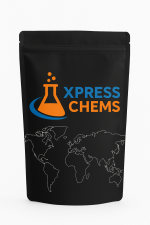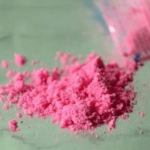Buy Pink Powder MDMA – USA & Europe
1. What is Pink Powder MDMA?
Pink Powder MDMA is a research-grade form of MDMA (3,4-Methylenedioxymethamphetamine) distinguished by its characteristic pink color. Unlike traditional white or off-white MDMA powders, Pink Powder MDMA may contain a mixture of pure MDMA and other substances, sometimes including synthetic stimulants or psychedelics. It is widely used in scientific studies exploring the neurochemical and psychoactive effects of MDMA on serotonin, dopamine, and norepinephrine systems.
2. Chemical Composition & Structure of Pink Powder MDMA
The principal chemical compound in Pink Powder MDMA is MDMA, with the molecular formula C11H15NO2, featuring a methylenedioxyphenyl group attached to an amphetamine backbone. The pink coloration arises from additives or impurities and does not necessarily impact the core molecular structure but may indicate variations in purity.
3. Research Applications of Pink Powder MDMA
Pink Powder MDMA is leveraged in neuropharmacology research for studying its entactogenic and stimulant properties. Its effects on neurotransmitter release, receptor binding, and downstream neurochemical pathways are valuable in investigating mood modulation, empathy, and therapeutic potentials such as for PTSD and anxiety treatments.
4. Recommended Laboratory Handling & Safety Guidelines
Handling Pink Powder MDMA requires use of personal protective equipment (PPE) including gloves, lab coats, and eye protection. Work should be conducted in well-ventilated areas or fume hoods. Accurate measurement and prevention of cross-contamination are important due to possible variability in composition.
5. Hazard Warnings & Risk Statements (GHS Classification)
Pink Powder MDMA may pose risks due to potential impurities or mixtures with other substances, including increased neurotoxicity or cardiovascular stress. Safe handling protocols and adherence to material safety data sheets (MSDS) and GHS classifications are vital.
6. Compatibility with Other Reagents or Substances
Avoid combining Pink Powder MDMA with monoamine oxidase inhibitors or other serotonergic drugs. Compatibility with common laboratory solvents such as ethanol is generally acceptable but requires careful control.
7. Emergency Protocols for Accidental Exposure
In case of skin or eye contact, flush with plenty of water immediately. If inhaled, move to fresh air. Seek urgent medical care for ingestion or severe exposure incidents.
8. Storage Stability & Shelf Life Monitoring
Store in airtight containers away from light, moisture, and heat to maintain stability and reduce degradation. Typical shelf life is 1-2 years depending on storage and purity.
9. Can Researchers Purchase Pink Powder MDMA Without a License?
Yes, it is possible to purchase Pink Powder MDMA as a research chemical without a license, but local laws and regulations must be strictly observed.
10. Is It Legal to Order Pink Powder MDMA Online in My Country?
The legality varies; researchers must ensure compliance with local laws governing MDMA possession and use.
11. Is Pink Powder MDMA Considered Safe for Laboratory Use?
Safe when proper laboratory safety protocols are followed, but the presence of impurities or other substances may increase risks.
12. Special Considerations for Researchers with Medical Conditions
Lab personnel with cardiovascular, neurological, or psychiatric conditions should take caution or seek medical advice before handling.
13. Allergen Exposure Risks When Handling Pink Powder MDMA
Use appropriate protective gear to mitigate risks of allergenic or irritant responses.
14. Can Pink Powder MDMA Be Used in Combination with Other Research Materials?
Exercise caution and verify interactions when combining with other serotonergic or psychoactive compounds.
15. Can Pregnant Researchers Handle Pink Powder MDMA?
Avoid interaction during pregnancy or breastfeeding due to insufficient safety data.
16. Proper Handling Protocols for Best Experimental Consistency
Utilize calibrated instruments for dosing, maintain sterile conditions, and prepare fresh solutions.
17. Optimizing Research Output with Pink Powder MDMA
Use high-purity and quality-controlled samples where possible, alongside standardized experimental setups.
18. Reported Results and Efficacy in Experimental Settings
Pink Powder MDMA delivers MDMA’s expected psychoactive effects but may show variability due to compound composition differences.
19. Known Adverse Reactions or Lab Incidents
Risks can include serotonin syndrome, cardiovascular strain, and allergic reactions. Strict adherence to protocols reduces dangers.
20. What To Do in Case of Severe Exposure or Contamination
Seek emergency medical assistance immediately, provide compound details to responders, and follow laboratory decontamination guidelines.
21. Can Alcohol-Based Solvents Be Used with Pink Powder MDMA?
Compatible with ethanol and other alcohol solvents when used under controlled laboratory conditions.
22. What If I Skip a Scheduled Measurement or Test Cycle?
Document any missed tests thoroughly and consult research coordinators to optimize experimental integrity.
23. Maximum Recommended Duration of Experimental Storage or Use
1-2 years of storage under ideal conditions is recommended.
24. Stability After Discontinuation of Testing
Retain samples in recommended conditions or dispose of degraded substances per hazardous waste regulations.
25. Is There Risk of Dependency or Sensitization?
Controlled laboratory use reduces dependency risk; sensitization remains a possibility with repeated exposure.
26. Long-Term Storage Recommendations for Pink Powder MDMA
Store sealed in moisture- and oxygen-free containers in cool, dark locations.
27. Alternative Research Chemicals with Similar Properties
Alternatives include MDA, MDEA, and related substituted amphetamines with empathogenic effects.














Reviews
There are no reviews yet.